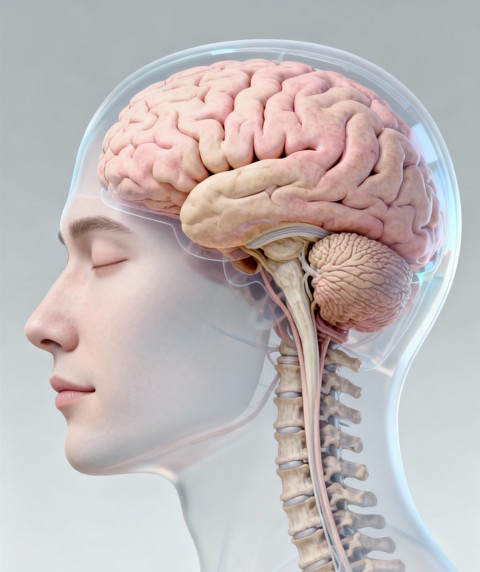
Introduction Headaches are among the most common health complaints in adults, affecting daily life, work, and overall well-being. While most headaches are not caused by serious medical conditions, they can be disruptive and sometimes signal underlying health issues. Understanding the causes...
Introduction Migraine is a common neurological condition that causes intense, throbbing headaches, often accompanied by other symptoms such as nausea, sensitivity to light, and visual disturbances. Migraines can significantly affect daily activities and quality of life. Understanding the causes...
Introduction Headaches are a common complaint among children, just as they are in adults. While most headaches are not indicative of a serious underlying condition, they can be distressing and...
Introduction Cluster headaches are a rare but extremely painful type of headache that often occur in cyclical patterns or “clusters.” These headaches are known for their intense, one-sided pain and...
Introduction Tension headaches are the most common type of headache experienced by adults. They are often described as a constant, dull pain or pressure around the forehead or the back of the head and...
Introduction Trigeminal neuralgia is a chronic pain condition that affects the trigeminal nerve, which carries sensation from the face to the brain. This condition is known for causing sudden, severe...
Introduction Chronic pain is defined as pain that persists for weeks, months, or even years, often lasting beyond the expected period of healing. Unlike acute pain, which serves as a warning signal...
Introduction Tourette’s syndrome is a neurological condition that typically begins in childhood and is characterized by repetitive, involuntary movements and vocalizations known as tics. While...
Introduction Alzheimer’s disease is a progressive neurological disorder that affects memory, thinking, and behavior. It is the most common cause of dementia, gradually interfering with a...
Introduction Dementia is a collective term for a range of diseases and conditions that cause a decline in memory, thinking, behavior, and the ability to perform everyday activities. Dementia is not a...
Introduction Down syndrome is a genetic condition that occurs when a person has an extra copy of chromosome 21. This additional genetic material affects development, leading to characteristic physical...
Introduction Dyscalculia is a specific learning difficulty that affects a person’s ability to understand and work with numbers. Sometimes referred to as “math dyslexia,” dyscalculia can make it...
Introduction Dyslexia is a common learning difference that primarily affects a person’s ability to read, write, and spell. It is not related to intelligence or motivation, but rather to how the brain...
Introduction Hydrocephalus is a medical condition in which there is an abnormal buildup of cerebrospinal fluid (CSF) within the cavities (ventricles) of the brain. This excess fluid increases pressure...
Introduction Fatigue is a common symptom experienced during or after many illnesses. It is more than just feeling tired—it is a persistent sense of exhaustion that can affect physical, mental, and...
Introduction Narcolepsy is a chronic neurological disorder that affects the brain’s ability to regulate sleep-wake cycles. People with narcolepsy experience excessive daytime sleepiness and may...
Introduction Exhaustion syndrome, sometimes referred to as burnout or stress-related exhaustion disorder, is a condition that develops after prolonged and overwhelming stress. It is characterized by...
Introduction Epidemic meningitis is a serious infectious disease that causes inflammation of the membranes (meninges) surrounding the brain and spinal cord. It often occurs in outbreaks, particularly...
Introduction Meningitis and encephalitis are serious conditions that involve inflammation of the brain and its surrounding tissues. Meningitis refers to inflammation of the protective membranes...
Introduction Japanese encephalitis is a serious viral infection that affects the brain and is transmitted by mosquitoes. It is most common in rural and agricultural areas of Asia and the Western...
Introduction Tick-borne encephalitis (TBE) is a viral infection that affects the brain and central nervous system. It is transmitted to humans through the bite of infected ticks, most commonly in...
Introduction Amyotrophic lateral sclerosis (ALS), also known as Lou Gehrig’s disease, is a progressive neurological disorder that affects nerve cells in the brain and spinal cord. Over time, ALS leads...
Introduction Facial paralysis is a condition where the muscles on one or both sides of the face become weak or unable to move. This can affect facial expressions, speech, eating, and even eye...
Introduction Cerebral palsy (CP) is a group of lifelong disorders that affect movement, muscle tone, and posture. It is caused by damage to the developing brain, usually before, during, or shortly...
Introduction Multiple sclerosis (MS) is a chronic, autoimmune disease that affects the central nervous system, including the brain and spinal cord. In MS, the immune system mistakenly attacks the...
Introduction Parkinson’s disease is a progressive neurological disorder that primarily affects movement. It develops gradually, often starting with a slight tremor in one hand, and can...
Introduction Polyneuropathy is a condition that affects multiple peripheral nerves throughout the body, leading to a range of symptoms such as weakness, numbness, tingling, and pain. The condition can...
Introduction Spina bifida is a birth defect that occurs when the spine and spinal cord do not develop properly during early pregnancy. This condition can range from mild to severe and may affect...
Introduction Breath-holding spells are episodes in which a child briefly stops breathing, often in response to frustration, pain, or fear. These spells are most common in young children, typically...
Introduction Febrile seizures are convulsions that occur in young children when they have a fever, usually as a result of a viral or bacterial infection. These seizures can be frightening for parents...
Introduction Seizures in children are episodes of abnormal electrical activity in the brain that can cause changes in movement, behavior, sensation, or consciousness. While seizures can be alarming...
Introduction Hereditary transthyretin amyloidosis, sometimes known as Skellefte disease, is a rare genetic disorder in which abnormal protein deposits (amyloid) build up in the body’s tissues and...
